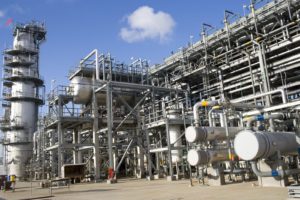You have to like a guy who does the thing that gives people a measure of hope.
Just when the grimness of the colossal price drop in crude oil was deflating people’s outlook for their economic future, someone did something uplifting.
Kirk Edwards published an “Open Letter to President Trump” in the Odessa American on March 24.
Many fully agreed with its sentiments. Even if someone quibbled with a particular, the fact remains that the populace saw a blow struck for their side. That’s what counted.
In the more-than-a-month since the letter appeared, the situation has changed somewhat. The situation we face in May is not the same as in late March. So Edwards’ plea has to be read with his timeframe kept in mind. Just the same, it’s his motives that are most worth contemplating:
“I ask President Trump to immediately place a $40-per-barrel tariff on Saudi oil coming into the United States. I ask you to quit defending Saudi Arabia with our troops and aircraft carriers and start defending your most critical domestic industry. The one that keeps this country moving with affordable gasoline and electricity. The $40 dollar tariff is the difference in price American energy producers were getting just two months ago versus the $20 per barrel we are getting this week. That tariff would generate nearly $1.25 billion dollars per month to the U.S. Government. The government can then direct that revenue back to the oil-producing states like Texas, Louisiana, New Mexico, and Oklahoma in an effort to help those states that are being massively impaired by the current dumping of Saudi Arabia. Filling the strategic petroleum reserve with $20 oil does nothing for the American energy producer. We need jobs and we need a price we can economically drill for, and $20 per barrel certainly isn’t it.”
PB Oil and Gas Magazine spoke with Kirk Edwards, and also with Kyle McGraw, chairman of the Permian Basin Petroleum Association (PBPA), in late March to ascertain how conditions currently impact Basin businesses and what the prospects are for riding out the tumult.
Edwards, who is a PBPA member, was asked about the initial reactions to his letter.
The response for him has been positive. Edwards prefaced his remarks by acknowledging that he is “preaching to the choir out here in the Permian Basin,” and so it has to be a foregone conclusion that Basin interests want all the support they can get.
Just the same, he said, “I’m getting reactions from hundreds of people. It [the letter] got picked up through some of my friends and viewed over 3,000 times on the first day that it was out there, just through LinkedIn and some other resources.”
People in the Basin are just looking for some answer as to how we fix what is going on, Edwards said.
“As I state in that op-ed, we in the oil business can fight these wars against Saudi Arabia. We do it every few years. But we can’t fight two wars, [a war] with this and [a war with] the virus at the same time.”
At the time the Saudis and the Russians entered into their price war, analysts stated that both parties were boosting their production to drive down the price of oil. While both nations might inflict damage on themselves, in reduced revenues overall, the real victim in this was seen to be the United States, which would realize even deeper revenue shortfalls because its cost of production was higher than that of the Saudis or the Russians, either one.
The added—and perhaps most damaging—element was the sudden arrival of the coronavirus pandemic, which slammed economies around the globe and caused oil demand to plummet. That shift came at a time when demand was already soft and worldwide inventories of oil were already high. The price war and health scare together acted to skyrocket supply. When supply is high and demand is low, prices plummet. Crude oil fell so low that at one point in March it registered in the $19 range.
“It’s terrible out here,” Edwards said. “You’ve got all of our friends with the service companies in Midland-Odessa that have been used to working their hearts out for the last so many years and staking their families and their business and everything they’ve got to live here in the Permian Basin and work here, and they’re just getting devastated today…. I’ll bet we lose 200 of our 400 rigs in the next two months, if this price remains where it is today.”
Edwards said that the frac crews could be hit the hardest because active drillers can still finish wells that they are drilling, and thus collect those earnings, but frac crews are likelier to be curtailed quickly because, as Edwards said, “no one’s going to be completing a well right now with these prices.”
An E&P with some hope for a better future price can drill wells and leave them in the “drilled un-completed” category, the oft-cited DUC category, and those wells will just be inventoried there for tapping on some day when oil prices are not in the cellar. But to frac a well in the current slump means to settle for a fraction of what the well would earn under more “normal” prices. Thus, frac’ing is hit harder.
Asked what oil and gas companies can do to weather the storm, Edwards admitted that the choices are limited. “Short term, they’ll have to lay off folks,” he said. “Nobody can afford to pay the salaries that these companies pay and not have any income coming in, so it will be tremendously devastating immediately for, not only the service companies, but also the professionals that work for the oil companies. I mean, the oil companies will start immediately laying off land people, drilling superintendents, the whole bit as soon as their rig stops. They can’t afford to keep them.”
Edwards views here reflect those of industry analysts trying to plumb the depths of the crisis.
Nowhere to Go: Oil Cuts Loom
IHS Markit expects up to 10 MMb/d of world oil production will be cut or shut-in from April to June 2020 as oil storage fills up and output from financially strapped companies begins to fall, according to a recent report from that firm.
If oil cannot be sold or stored, it cannot be produced, IHS observed. Transportation constraints and lack of access to every available tank will prevent the utmost maximum level of storage capacity being reached. As Jim Burkhard, IHS’s vice president and head of oil markets, puts it: “If there is no international agreement to curtail oil production then brutal unadulterated market forces will bring the oil market into balance. The laws of supply and demand are fierce in extreme conditions.”
Oil demand in the second quarter of 2020 is projected to be 16.4 MMb/d less than a year ago, with a decline in April of around 20 Mmb/d. Demand is collapsing because of the closure of a large share of the global economy because of coronavirus disease 2019 (COVID-19).
With the global economy already in crisis, a hammer blow could fall in the next two months if, as seems likely without immediate action, more surplus oil floods the marketplace than at any time in history.
The market-share battle is between Saudi Arabia and Russia, IHS reminded. Their report added that “The conflict could always be ended by a phone call among the principals.” [Editor’s note: In early April, President Trump indicated he had spoken with leaders at both countries, and that he was getting cooperation from each. Those developments are at such an early stage, however, that we cannot speculate here on what their progress might be.]
Like Edwards, Kyle McGraw was reached in late March, and asked to comment on a crisis that was seeing fresh developments almost day-by-day. He obliged, and yet the same caveat must be applied here: the remarks cover the situation then, not necessarily the conditions in May 2020.
McGraw pointed to the fallout of the coronavirus impact. “The crisis arising right now is more coronavirus-related, and more related to the slowdown of the economy that that has caused,” McGraw said.
“You’ve got the health issue that has shut down our air travel and affected other modes of travel. That’s caused crude oil prices to fall accordingly.
“The new crisis arising right now is more coronavirus-related, and related to the economy slowdown that that’s caused. So you’ve got the health issue that shut down our air travel and other things. That has caused prices to start falling.”
Meanwhile, supply is surging. McGraw said crude oil is backing up around the country, mostly at the refineries, because the businesses that market jet fuel and gasoline are limited in how much they can take.
“So demand for U.S. gasoline was 9 million barrels a day, and it’s dropped to 5 million barrels a day,” McGraw said. “I hear that diesel is holding okay because lots of trucking is going on. People are shipping products via Amazon, Walmart, and other vendors. But jet fuel and gasoline have low demand and refiners are starting to turn down contracts for crude.”
McGraw said that getting the country back open and running is the key to answering the crisis.
“We’ve got to start burning that surplus off,” he said. “And even then, you still have the price [dilemma]. So at PBPA, we ar trying to craft a response from the industry, or at least from our corner of the industry, which, as many know, is pretty much the [bigger portion] of the production for the United States right now. We really want the Trump administration to come down hard, lean hard on the Saudis to get them to act right. I don’t think tariffs, or sanctions, or anything like that is going to get it done because we were a net exporter just a month ago, and if you put tariffs on [other countries], they just turn around and put them right back on you.
“But we want political pressures, whatever pressure they can apply. What the Saudis are doing here is going to decimate our industry, and what that translates to, is that it is going to decimate Texas and New Mexico, as far as tax collections are concerned.”
McGraw said that current forecasting shows the crude price to be driven down to an $8 differential to NYMEX, whereas in March it stood at a dollar positive.
Where to from Here?
Asked what Permian companies could be doing to protect themselves, McGraw had these suggestions.
“One thing is to not bring on new production. Hold off on your production side,” he said. “Two, let’s get our senators and our congressmen to help apply pressure, any pressure they can, to get the Saudis to act right.’
Lastly, there is the element of keeping one’s hopes strong. “The encouraging thing can be this—that you still have your faith,” McGraw said. “Hopefully people who had faith, still hold their faith, and those who didn’t ought to develop some in a hurry because that’s about all you got to rely on. Ultimately, these things come and go. And we’re here for an eternal purpose, not just for what oil we can sell.
Edwards, too, was asked what note of encouragement he could raise. He admitted that circumstances make that tough, but after a moment’s thought he offered this:
“To me, the silver lining is going to be where the Trump administration and the American people realize how important American energy is to America,” he said. “It’s just like what we’re seeing in the manufacturing of pharmaceuticals and the medicines that can work for the virus. They’re all made in India and China, and we’re sitting here wondering why our population can’t get something of its own going. This country has to wake up and understand how things work [in world economies]. Not one person in this country is worried about right now about filling up their car and turning on their electricity and heating their homes.”
____________________________________________________________________________________________________
By Jesse Mullins












